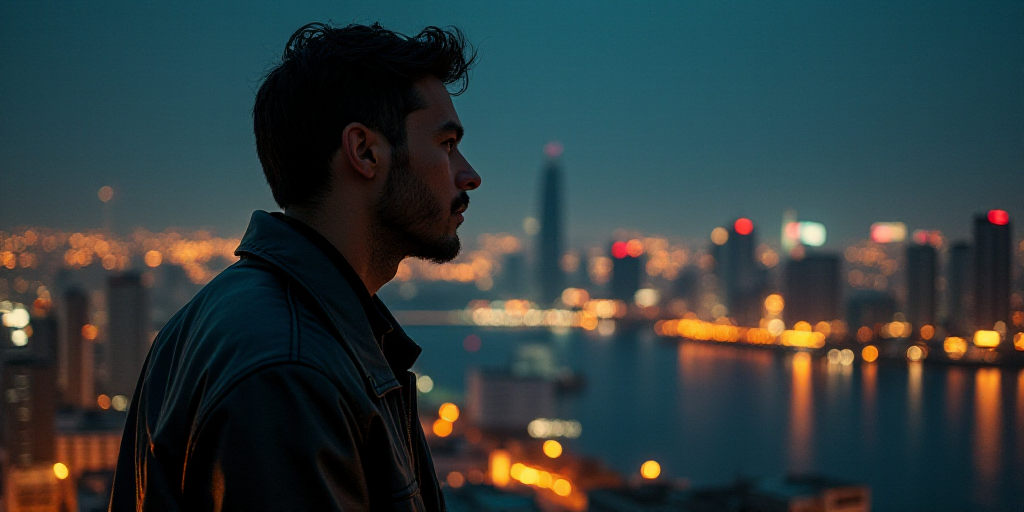Introduction to Edgar Mendoza and His Artistic Journey
In the expansive and often shifting universe of contemporary art, few artists achieve such profound and lasting resonance as Edgar Mendoza. This Mexican painter, hailing from Durango, has established himself as a true master of realism. His work not only captivates with its impeccable technical execution but also invites profound introspection. Mendoza’s career serves as an inspiration, demonstrating that fidelity to one’s vision and a relentless pursuit of truth can forge an artistic legacy that transcends borders and time.
The Essence of Edgar Mendoza’s Art
At the heart of Edgar Mendoza’s art lies his ability to transform observable reality into dreamlike and poetic universes. His paintings, distinguished by remarkable detail, do not merely aim to replicate the visible; instead, they act as gateways to emotions and sensations. Mendoza describes his work as something that should be “felt” rather than “understood,” imbuing his realism with a unique quality—a “contemporary realism” that navigates between the objective and subjective, employing figuration to express profound concepts and abstractions.
A Lifelong Observer
From his childhood, Edgar displayed a special inclination to observe the world differently. Often retreating into his “corners” to process what he saw and felt, his path to art was not linear—he pursued forestry technology and even considered the priesthood. However, a chance encounter with a renowned painting at age 20 awakened the slumbering artist within him. From that moment, brushes became an extension of his being, a medium to embody his innate ability as a “reader of codes,” imprinting both internal and external perceptions.
Unwavering Commitment to Authenticity
What truly distinguishes Edgar Mendoza on the international stage is his unwavering commitment to authenticity. In an era where fleeting trends often dictate the artistic landscape, Mendoza remains steadfast in his creative nature. For him, being an artist means creating without concern for being deemed outdated or contemporary, maintaining a broad criterion without dismissing other forms of expression. This artistic maturity mirrors his personal evolution, finding inspiration in life’s lessons and experiences that reshape his existential concept, recognizing his own qualities and flaws as an inexhaustible source of creativity.
The Creative Process and the Role of Galleries
Mendoza’s creative process is as challenging as it is rewarding. Depicting atmosphere and air in realistic scenes poses a constant difficulty, a challenge he embraces with each new piece, as if forgetting how he approached it previously. The true satisfaction lies in capturing the authenticity of reality as his senses interpret it and externally, provoking meaningful dialogue about his concepts. This pursuit of technical perfection and emotional resonance elevates his work beyond mere representation, transforming it into a mirror inviting viewers to reflect on their inner selves.
Mendoza emphasizes the crucial role of galleries in an artist’s career. He likens a gallery to a “boxing coach,” working hand-in-hand with the artist to shape their true identity and resolve obstacles with empathy. This perspective underscores the importance of a deep, committed collaboration between artists and their representatives, such as Héctor Díaz and his gallery, which has been instrumental in projecting Mendoza’s “universal realism.” Such partnerships enable artists like Mendoza to stand out in a globalized market, where the inherent quality of the work meets strategic dissemination.
Contemporary Realism and the Value of Art
Edgar Mendoza’s philosophy on art and its value is deeply reflective. He believes that art transcends monetary worth, gaining timeless significance once the artist is no longer present. For him, art is humanity’s most important and transcendent expression, a sophisticated language that defines us as a species and preserves records of our existence and thought. Without it, the chronicle of who we have been, are, and will be remains “incomplete, empty.” This perspective imbues his work with a purpose beyond aesthetics: contributing to that imperishable record of human experience.
Humility and Lasting Impact
When asked about his legacy, Mendoza believes that what future generations deem relevant and identify with will be his true mark. Nonetheless, his contribution is already evident, particularly for aspiring young artists who can draw inspiration from his story of dedication and overcoming adversity.
Key Questions and Answers
- What makes Edgar Mendoza’s art unique? His “contemporary realism” navigates between the objective and subjective, using figuration to express profound concepts and abstractions.
- How did Edgar Mendoza’s path to becoming an artist unfold? His journey was non-linear, passing through forestry technology and considering priesthood before a chance encounter with a renowned painting awakened his artistic calling.
- What is Edgar Mendoza’s stance on authenticity in art? He remains committed to his creative nature, unconcerned with being deemed outdated or contemporary, maintaining a broad criterion without dismissing other forms of expression.
- How does Edgar Mendoza view the role of galleries in an artist’s career? He likens a gallery to a “boxing coach,” emphasizing the importance of deep, committed collaboration between artists and their representatives.
- What is Edgar Mendoza’s perspective on the value of art? He believes that art transcends monetary worth, serving as humanity’s most important and transcendent expression, preserving records of our existence and thought.






